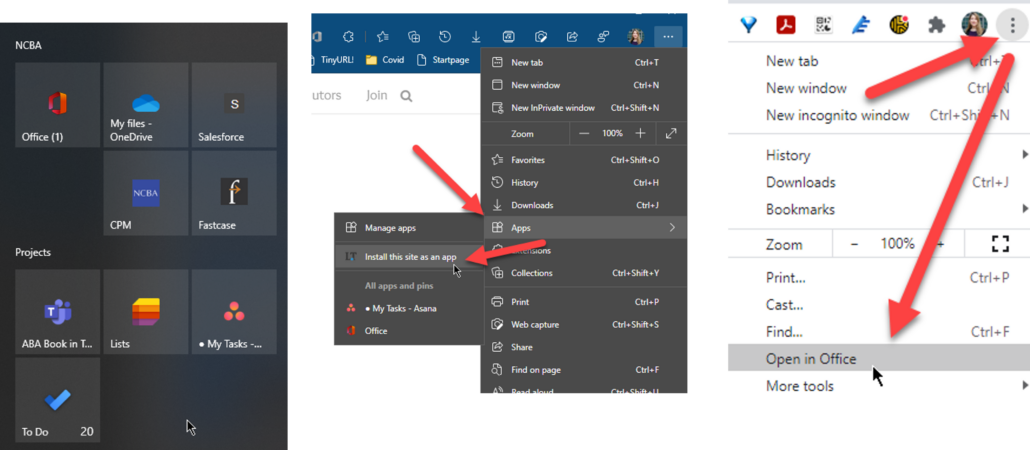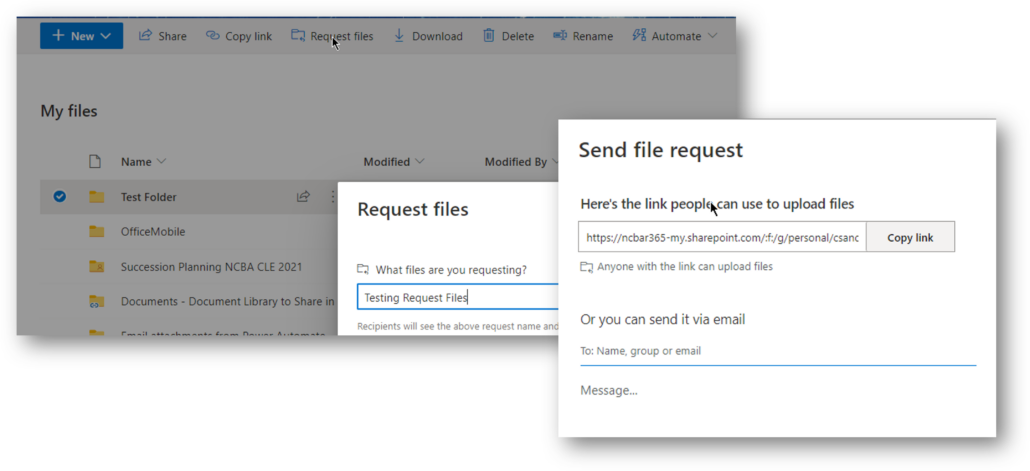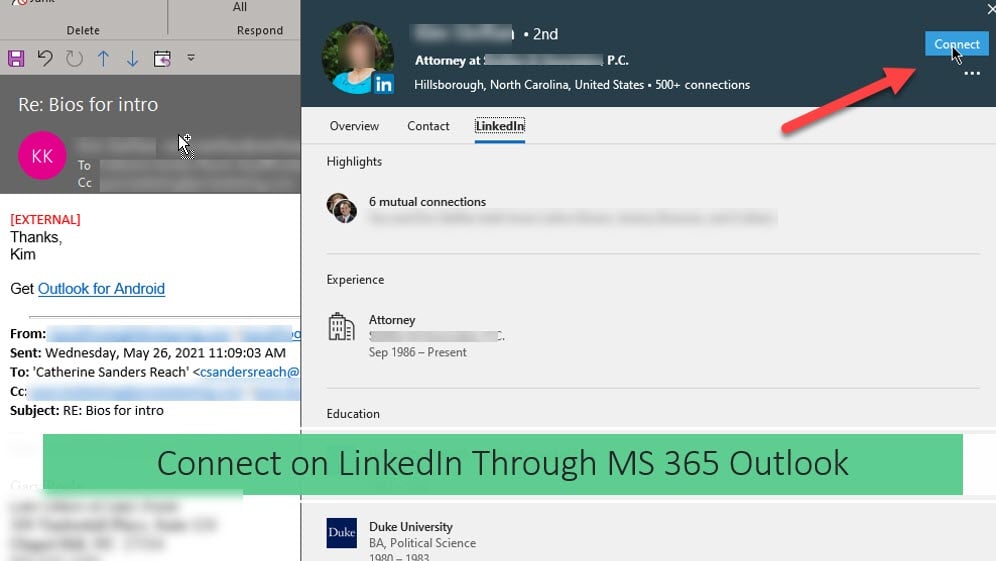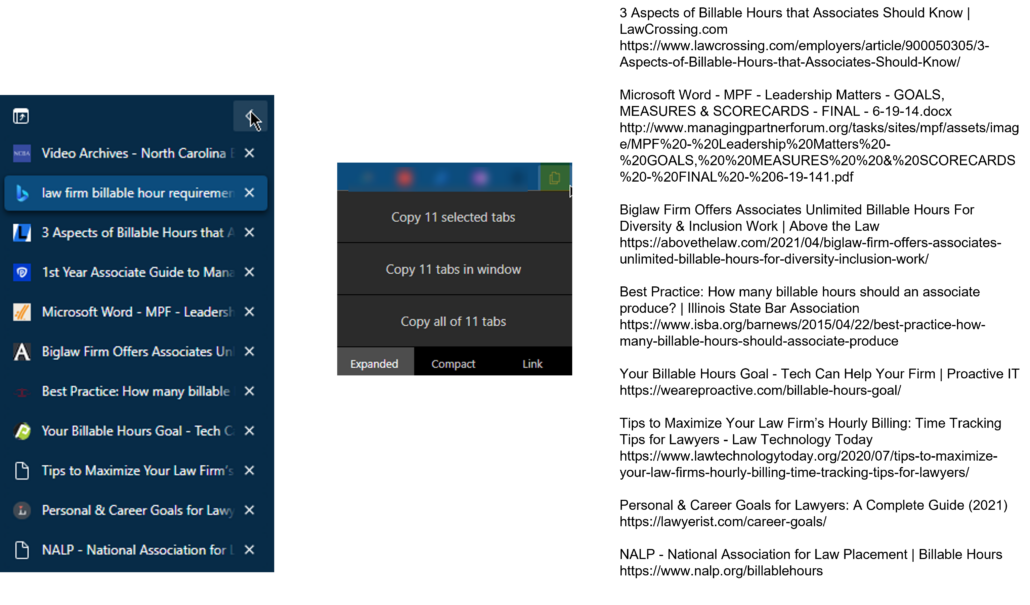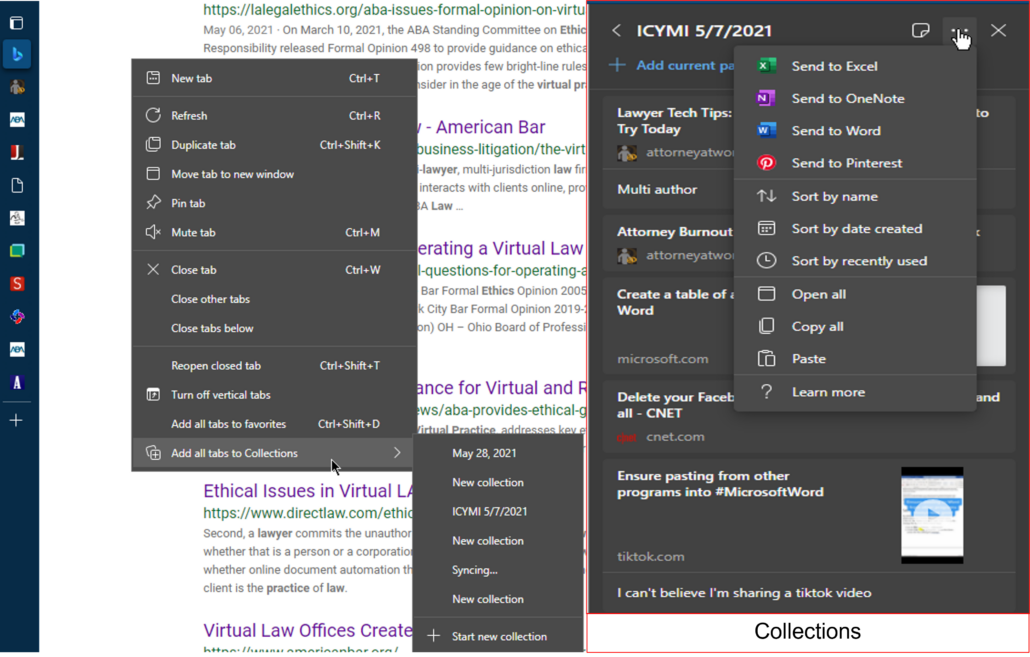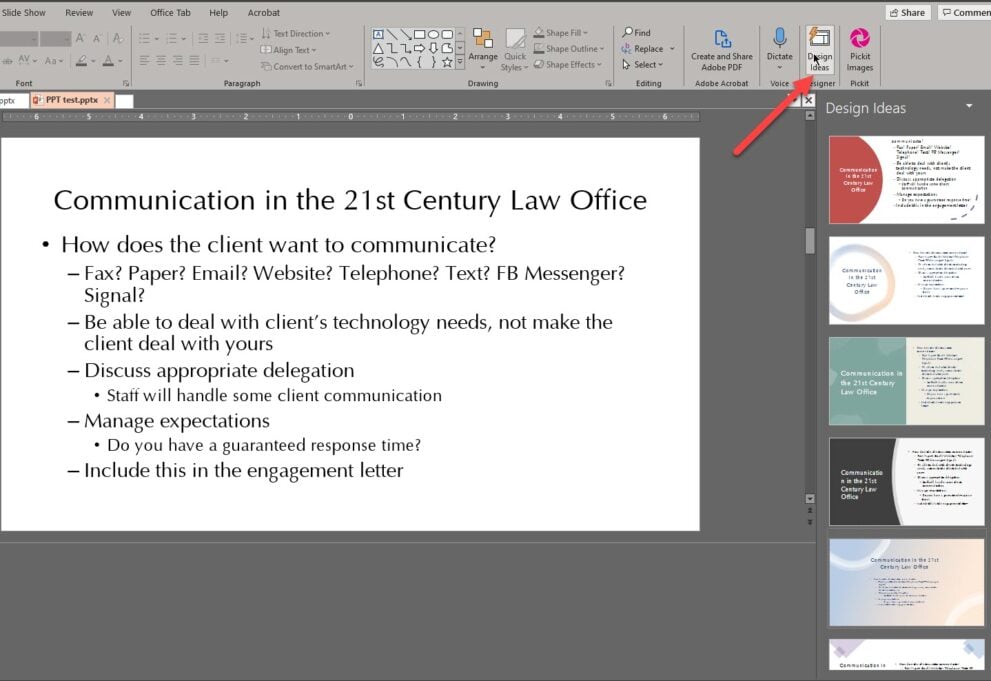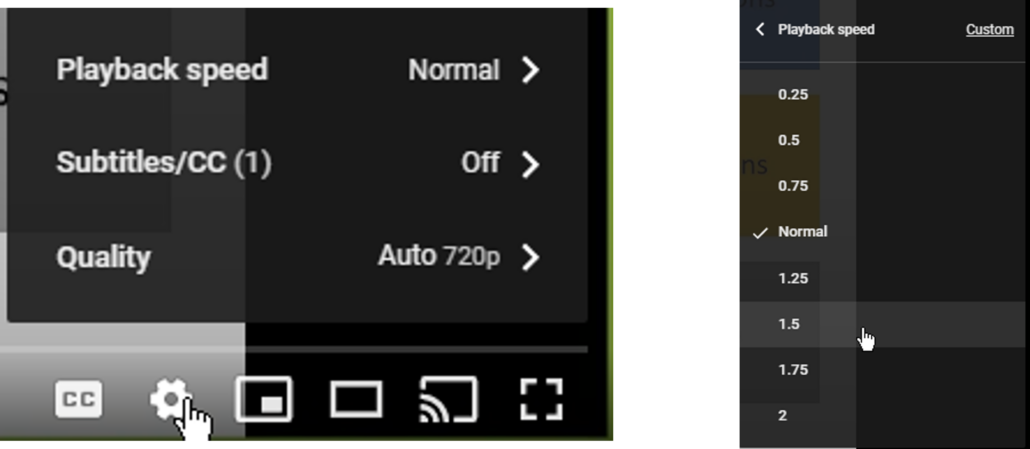Ten Tips to Speed Up Your Work
There are so many ways to save yourself keystrokes and headaches while you are using your computer, whether dealing with email, opening a website, sharing information, requesting information, or interacting with social media. Following are just a few tips that can help you speed activities up for little to no cost.
1. Add Apps to the Windows Start Menu
Many of the websites you visit through the browser are apps, like Fastcase, Microsoft 365, Clio, LinkedIn and hundreds of others. Instead of accessing them by opening a browser and opening a new tab you can add them as apps to your Windows Live Tiles menu. The nice thing is the “apps” are now available through your Start menu – no navigating to the browser and then open bookmarks, etc. And no losing the app in the gazillion open tabs in your browser. Open apps will appear in the Windows taskbar.
You can do this for most software as a service (SaaS) sites. You can also go to a specific page within an app – like creating an “app” to go straight to assigned Tasks in Asana or directly to a channel in a Team workspace.
Here are some instructions for adding websites as apps through Microsoft Edge and Google Chrome to the Windows 10 Start menu.
In MS Edge
-
- Go to the website you want to add (like Office.com)
- In the More menu in the upper right of the browser (…) click Apps and then “Install this site as an App”
OR in Chrome:
-
- Go to the website you want to add (like Office.com)
- In the more menu (vertical ellipses) click “Open in Office”
Then open the Windows Tiles (click the Windows icon in the far-left corner at the bottom of your screen) and you will see the new “app” you created at the top of the list of your applications under “Recently Added”. You can drag and drop it to the Live Tiles.
2. Send Link to Request Files from OneDrive
In addition to sharing files with clients from Microsoft OneDrive, now you can send a link to a client to request that she securely send files to you. In MS OneDrive create a folder and then select that folder and look in the options at the top of the screen. Choose “Request Files”. A dialog box will appear, and you can specify the files you are requesting, for instance: “Please send us a copy of your driver’s license, proof of current address and three paystubs” then click Next. In the next dialog box, you can add the person’s email address and a note and send via email, or copy and paste the link into an email or document.
The recipient of the link does not need to have a Microsoft account. Once the files have been uploaded you will receive email notification and the uploaded files will have the name of the sender appended to the file name (e.g. catherine_reach_paystubs), which is handy if their file names aren’t very descriptive. Here are the full instructions.
Request files is only available for OneDrive for work or school accounts and your MS 365 admin must enable Anyone links in OneDrive. Please contact your admin if you don’t see this feature. This feature is not available for Office 365 Government, Office 365 operated by 21Vianet, OneDrive for home, or Office 365 Germany.
If you do not have MS 365 there is a similar feature in Citrix ShareFile and undoubtedly other web-based document repositories. You can also check out Pipe|File, which lets you create templates to request files securely, which is very handy if this is something that you do on a frequent basis. Pipe|File will also send reminders to the recipient and let you add a deadline.
3. Connect on LinkedIn Through MS 365 Outlook
If you are using Microsoft Outlook through a MS 365 subscription you can send a LinkedIn connection request to people you correspond with via email. Simply mouse over the sender in the email header, click on the LinkedIn icon, and send a connection request. You will see their mini profile if you are already connected. This doesn’t work 100% of the time, but it is worth a shot. Here are the set-up instructions.
4. Create Email Aliases in Gmail Using the “Plus Sign”
Gmail users can create email aliases in Gmail with the plus sign. You can insert a “+” with a combination of words at the end of your username (but before the “@” sign) and the emails will still come to your primary email address. Gmail will not look at what comes after the plus sign in the address so you can create infinite aliases of your Gmail address, making it easier to organize your inbox and locate your emails later.
For example, next time you sign up for a newsletter you could use “[email protected]” or keep all communications for your subscription services together with “[email protected]“.
If you aren’t a Gmail user but like the idea of an email alias check out the open source AnonAddy for free unlimited anonymous email addresses to use for online purchases, downloading free white papers and for other reasons. The fewer times you expose your real email address to third parties the better, since your email address is often your username in many systems – half of your login credentials!
5. TabCopy Extension
Do you ever do research online and want to send the links to someone or add them to a document, but without having to copy and paste each link in each tab and add the page title or description? Try the TabCopy Extension. Here is the link for Chrome but is available as an extension in most browsers. Just do your research, copy all the open tabs with their page titles and links with TabCopy, and paste into email/doc/newsletter, etc.
Once installed, click the TabCopy button on the browser toolbar to access the TabCopy drop-down dialog box.
The TabCopy extension provides a simple drop-down window containing three options for which sets of URLs to copy and the format they will be copied in.
You can copy the URL for the selected tab, copy all the URLs for all the tabs in the current window, or in all open windows. The extension also allows you to copy the URLs in three different formats:
-
- Expanded– The links are copied and pasted with title and URL on separate lines and a blank line between each tab’s URL.
- Compact– The links are copied with no extra spacing. Each title and URL are on the same line separated with a colon. And there is no blank line between each tab’s URL.
- Link– This copies the tab URLs as hyperlinks. Make sure you paste these links into a program that accepts hyperlinks, like Word. Otherwise, all you’ll get are the titles of the links and no URLs.
Then, you can paste the copied URLs into email, a Word document, or wherever you need to put them.
6. MS Edge Collections
In the Microsoft Edge browser, which is Chromium based and works on all operating systems, Collections are different than bookmarks or favorites. Collections are more like an Evernote notebook or Pocket. You create a collection name and add websites, or text selected from a webpage. You can add notes about a particular element in a Collection or within the Collection as a whole. You can open all the pages in a Collection or send the Collection to Excel, OneNote, or Word. For research, Collections can be quite handy without having the need to use a tool beyond your browser. In the right click menu on tabs you can add all open tabs to a new Collection. If you add an item to a Collection, say a new desk chair, a link to do an instant price comparison appears. Great for comparison shopping.
7. Dlvr.it
Are you writing original content online? Once your content is generated get it out there! You can automate this process, though the “how” varies depending on your blog or publishing platform. In WordPress you can search for an add-on or widget that lets you automate the process of sending posts to your social media platforms. Wix automatically asks if you want new blog posts to be fed to Twitter and Facebook. IFTTT (If This Then That) will let you set up a recipe to share posts from WordPress, Weebly and any blog platform that generates an RSS feed to any social network. If all of the above sounds a bit outside your comfort zone check out dlvr.it, which is a free (for 3 feeds and 2 social pages/profiles) tool that monitors your blog for new content and shares it with your social networks. It is simple to set up and will help you spread the word to highlight your blogging efforts. Dlvr.it Pro ($8.29 per month) will further your efforts by reposting content on a schedule and more.
8. Microsoft PowerPoint Designer
Unless you have a design background and the time and skills to create attractive slides in MS PowerPoint try the PowerPoint Designer. If you have PowerPoint through a Microsoft 365 subscription, Designer suggests attractive layouts and makes your slides immediately look better. You can preview each design suggestion before you commit to one.
9. Close All Open Outlook Message Windows
Do you find that you have a lot of open emails after spending time in MS Outlook? If you would like to close them all in one click, but not close Outlook itself, use the “Close All Items” button. An added benefit is that if you have started a draft of an email or response to an email you will get a chance to edit, save or delete it when you click the “Close All Items” button.
This handy feature is easily overlooked. It is housed in the View tab in the Ribbon, all the way to the right. When you click on this button, Outlook will close all your open item windows. This includes email messages, opened appointments and meeting items, task items, contact items, etc.
To be able to access this command without needing to switch to the View tab and back to the Home tab again, you can add the command to the Quick Access Toolbar (QAT). This will add the command to the row of custom commands that are located above (or below) the Ribbon. To do this, right click the Close All Items command on the View tab of the Ribbon and choose: “Add to Quick Access Toolbar”.
10. Speed Up YouTube Videos
Sometimes you might find a little time to watch a TED talk or a speech on YouTube. If your time is limited, you can speed up the video a shave a minute or two off the run time by increasing the speed of the video. Click the gear icon to go to Settings and increase the playback speed. If you are bored, you can increase the speed until the speaker sounds like Mickey Mouse for your own amusement. Of course, if the speaker is already talking a mile a minute you can slow down the speed, which is especially helpful for complex technology tutorials.
Conclusion
There are so many tips and tools to recapture some time in your day while using your computer. Keep an eye out for tips and try a few to see if it makes a difference.
*** Special thanks to Erik Mazzone for his contribution of ideas to this post.
